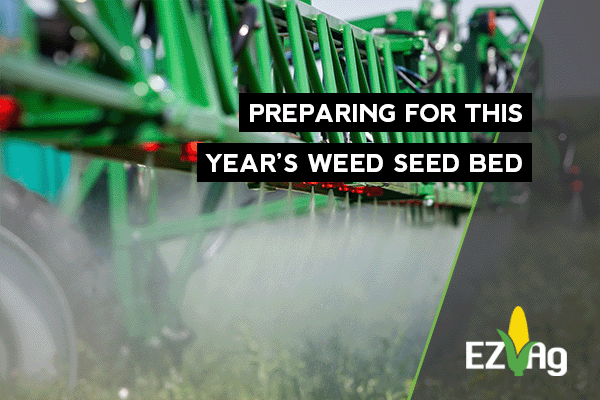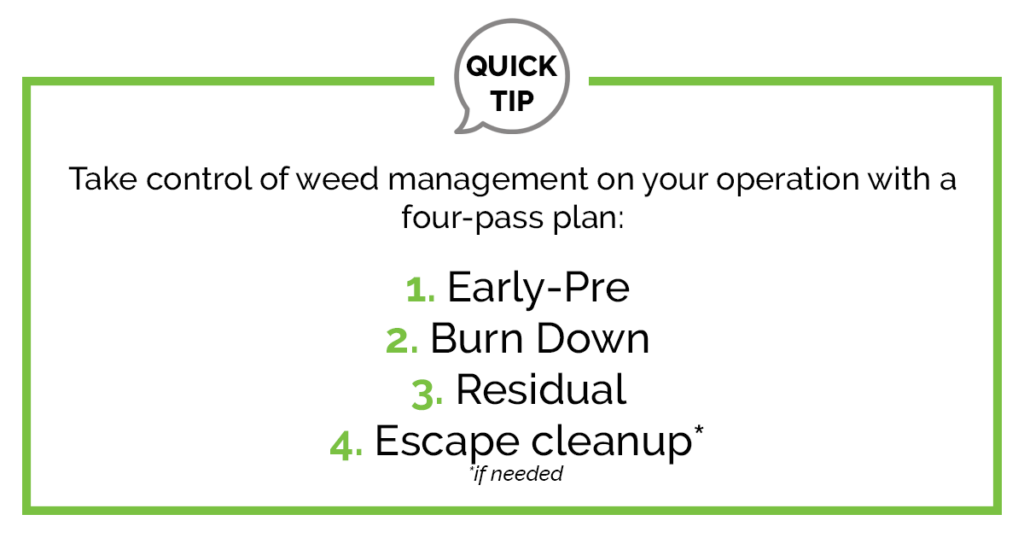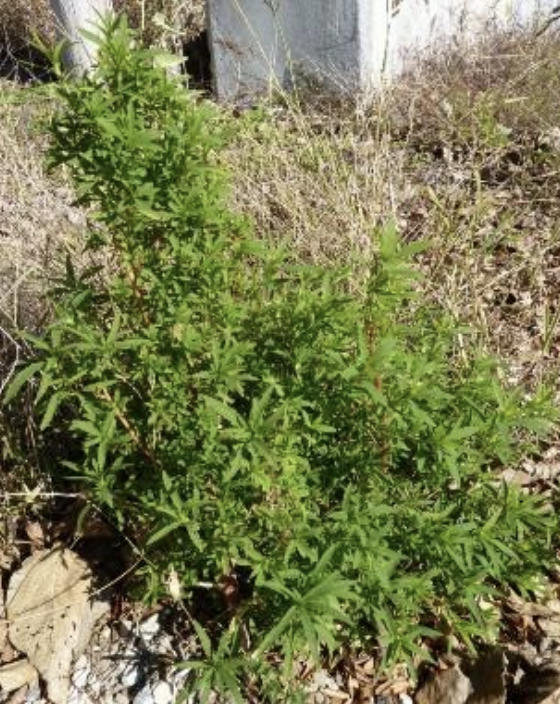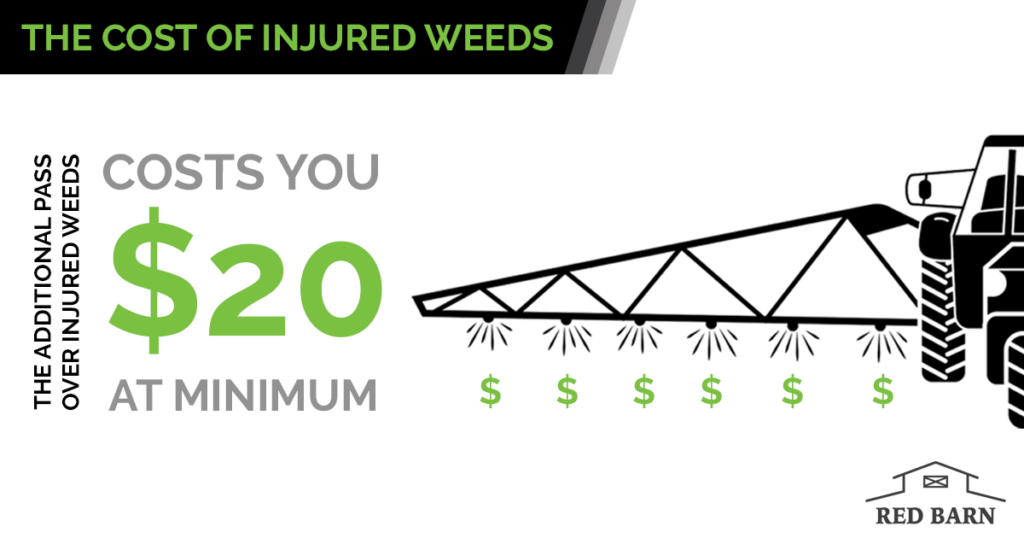When discussing nature and the world around us, we often use the term, “survival of the fittest.” While this term generally brings to mind a particularly gut-wrenching scene from a Discovery Channel nature documentary, I want to challenge you to set aside that visual and think about how this term can apply to your corn crop.

As the growing season progresses, not only will your corn crop grow and develop but so will weeds, creating a competitive environment where your crop and weeds will battle for the keys to survival: light, water, and nutrients. Ultimately, the longer the weeds compete with the corn, the greater the likelihood of yield loss.
An increased weed seed bank due to wetter-than-normal conditions last June and July, kochia sightings in February, and the signs of a warm, wet spring on the horizon, the time to talk about weed control is now, long before you ever roll your planter across your field.
Considering this Year’s Weed Seed Bank
The 2023 growing season may seem like a distant memory but the impacts of the events of last season are still tangible as you prepare for your 2024 crop. If you recall, we had a really wet spell in June and July during the busy wheat harvest. Those 95 degree days, steady rainfall every 4-5 days, and empty fields unfortunately created the ideal environment for weeds to get out of hand. And they did not miss the opportunity to do so!
What this means going into this year’s corn crop is we need to be at the top of our game. And even more so than in a normal year. There is a weed seed bank in almost every field you need to be aware of, but unfortunately, by having that moisture in a time when we couldn’t timely manage weeds, we added to that bank in a big way.
So with our weed seed bank top-of-mind, let’s shift our thinking around identifying the times of year we are most susceptible to this bank coming to bite us.
Crop Rotation, Canopy and Weed Management
There are two times in a crop rotation when the potential for weeds to get away is at its highest:
- In wheat stubble, right after wheat harvest.
- In summer fallow between the fall crop and when the wheat was planted.
Weeds can get away in a big way during these times because bare fields mean the weeds only have themselves to compete with for survival.
Because of this, the old adage your grandpa used to repeat every growing season, “The best herbicide on the market is a healthy growing crop,” is in fact true. But I’m going to add my own twist to that based on my 20-plus years of farming experience:
The best herbicide on the market is a healthy growing crop paired with a blanket application of herbicide that gets your crop to canopy with as minimal competition as possible.
I know, I know. It doesn’t roll off the tongue quite as smoothly but stick with me!
Did you know, when farmers started top-dressing wheat with fertilizer, they were doing it as a weed control mechanism? The thought was: make the crop healthier, faster so it can outcompete the weeds in the field. It was an after thought that the practice also helped increase yield!
So when you’re thinking about managing weeds in your corn crop, I want you to really think about building a plan that accounts for the times when you are most vulnerable to rapid weed development and how you’re going to get that crop to canopy with as little weed pressure as possible.
Let’s dive into what that can look like on your operation!
Count on Three Passes, Plan for Four
When managing weeds in corn, you really only have the option to use weed control methods until canopy. Not only do you hit the maximum height or growth stage for most herbicides but killing weeds below the cover of a corn canopy is nearly impossible due to limited penetration. And we’ll dive into this later, but an injured weed is always more expensive and tougher to control.

The First Pass
So in order to effectively manage weeds while considering the limitations of weed management post-canopy I recommend making your first pass an early-pre herbicide pass. This practice can be done one of two ways: in the late fall, early winter (November or December) or early spring (February or March).
The Second and Third Passes
For your second pass, you will also have a couple approaches you can take depending on your plating timing. If you plant early, your pre-application may carry you through planting when you would apply both burn down and residual. In this situation there is a chance you will need to run a clean up pass to manage escapes post-planting.
If you plant later, late-May or early June, you may need some extra punch to your plan. For example you’d do a true burn down at or before planting and then follow up post-plant with your residual. In this scenario you catch just about everything with your post-planting residual because the amount of time between application and canopy is shorter. You may have to do a little clean up in a heavy weed pressure year, but not always!
The Fourth Pass
Regardless of when you time your early-pre and how early you plant, you need to count on at least three applications to effectively manage weeds. Depending on the growing season and weed seed bed/pressure, there is a chance for a fourth application as well. It’s why I like to say: count on three passes, but plan for a fourth. Why? This year is a prime example as we’ve got a load of reasons that are leading us to believe our pressure will be greater than normal.

For example, if your weed control got out of hand last year in wheat stubble, you should already be preparing yourself for the possibility of the fourth pass with the increased weed seed bank. You’ll also want to focus on being ahead of the game this year as well! The farmer’s almanac is predicting a wetter than normal spring which is only going to give this seed bank some critical fuel for growth. This one-two punch vastly increases your likelihood of escapes.
Further our 2-4” soil temperatures have not fallen below freezing in well over a week and it’s not hard to find kochia that has already sprouted. If soil temps remain steady, and we don’t experience another cold snap, these weeds could survive and your battle of the weeds is officially underway… in February!
As you can see, Mother Nature can – and will – throw a wrench into your week any chance she gets. Not much in farming is guaranteed except the unpredictability of nature. And this is precisely why a weed management plan is imperative to your crop’s success. I know, it sounds like a lot of work, and to be honest, it is! But I’ll tell you why this matters next.
Building Your Weed Management Plan
We know that multiple modes of action are critical in the fight against weeds. While this is a sound agronomic principle that sets you up for success in the long-haul, what that means when it comes time to plan is there are a TON of herbicide options you need to sort through. And of course, they all have varying characteristics, cut off dates, and label requirements.
Oh, and don’t forget there will be fields on your operation that have different weed profiles and as such need to be sprayed differently. Plus, you’ll want to keep in mind what weeds were the problem in the previous season and plan accordingly. All of this is downright overwhelming!
Can you imagine the added stress of sorting through all of this information, in real-time, every single time you have to make an application? I’m stressed just thinking about it! Real quick, I want to check in on my readers who make their weed management decisions on the fly:
How’s your blood pressure doing? And how does that pressure rise or fall based on what’s happening in your fields?
Now, don’t go run to your doctor and say Matt Long told you the Max Yield System will cure your high blood pressure because it won’t. But I can guarantee this strategic approach and the planning that comes with it will relieve you of the burden of stressful real-time decisions. Here’s how:

The Max Yield System is a simplified planning process where we make all the decisions for your crop ahead of time and schedule out the work based on these decisions. And the best part, this type of planning works 85% of the time.
How can I make such a bold claim? Because I use this plan on my own personal farming operation.
And obviously, this plan isn’t impervious to the whims of the growing season. 15% of the time, there is an uncontrollable variable thrown into the mix that prevents you from getting the work done by the time you need it. But in this scenario, you reduce the last-minute scramble by only having to make a small adjustment to accommodate the existing plan versus rethinking an entire new strategy.
The biggest mistake I see guys making when they make decisions on the go, is they rush into a retailer with a weed management plan and then balk at the cost of that plan. Then in a stressed scenario, the farmer starts making a decision based on the dollar amount versus the reality of the problems in the field.
As a character in the TV show Yellowstone once quoted, “Cool stuff ain’t cheap, and cheap stuff ain’t cool.” This can apply to your weed management plan as follows: “Good plans ain’t cheap, and cheap plans don’t kill.”

You may have saved money on that payment, but did you consider the cost if the application doesn’t give you the control you need? You are spending at minimum $20 extra to run an additional pass over a field with dinged, but not dead weeds. On top of that cost, you’re likely also spending more on chemicals because now instead of three ounces you need five, or instead of half a pound you need three-quarters of a pound. Then while we’re at it, go ahead and tack on some additional adjuvant or surfactant later to the load for “better” control!
Do you see how quickly this snowball can take off down the hill? And all because you didn’t kill those weeds the first time because you rushed an in-season decision that could have been made months in advance..
This is why I am such a strong proponent of the Max Yield System. It offers you the opportunity to wade through the waters of weed management ahead of time, and especially when you are not in an all-hands-on-deck situation. If this reduced stress approach is intriguing to you as you approach 2024, get in touch with our team ASAP.
Let us help you take control of your weed management plan!
The window to make a solid plan is closing, but it hasn’t passed us yet!
This post was written by Axis Seed – Red Barn Enterprises President and resident corn expert, Matt Long.

Leave a Reply